published: 31 May 2024
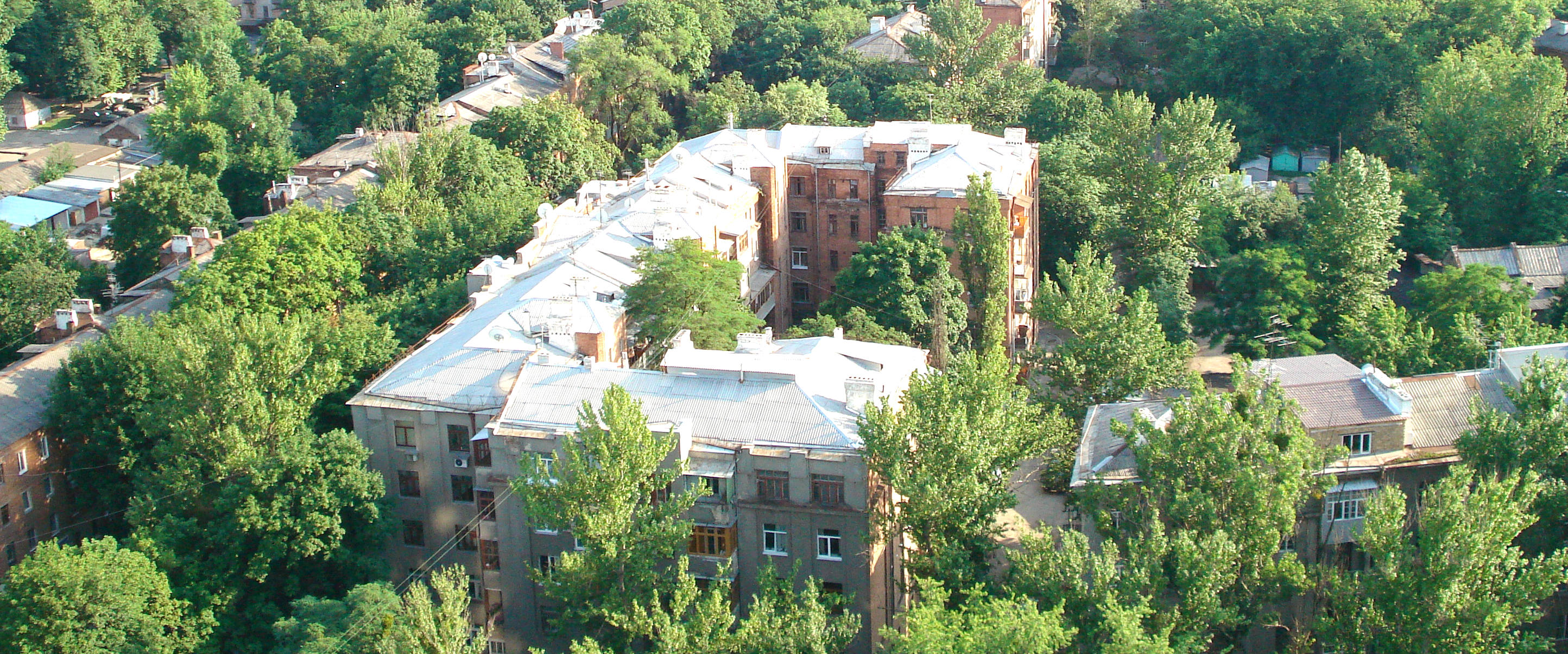
The story of Kharkiv’s Slovo House for writers, from the 1920s to the Great Terror
As Kharkiv is being fiercely shelled by the Russian army, a member of the Kharkiv Human Rights Defense Group, Iryna Skachko, describes the history of the “Word” (Slovo) House . This apartment building was built in Kharkiv in the 1920s to house Ukrainian writers, most of whom would later be executed or sent to camps, in a matter of years.
This Ukrainization is a way to reveal all of us, Ukrainians, and at the same time destroy us so that we may never show our faces...
Mykola Kulysh “Myna Mazaylo”
...The quiet center of Kharkiv. In a park near a gray five-story building, a janitor meditatively sweeps away fallen lilacs. There is a scattering of toys in the sandbox. Several windows are blocked with plywood, and here and there under the walls there are scatterings of broken glass – traces of recent airstrikes in the city center. At first glance, you wouldn’t say that this house could become a museum of the Ukrainian Executed Renaissance (a generation of artists and thinkers who were executed during the Stalinist Terror).
Ordinary townspeople today live in the apartments of the “classics” (except perhaps in the former apartment of the publicist Pyotr Lisovoy – which now offers a literary residence). There are more than a hundred names on the memorial plaque, in the form of an open book. For a very long time, a completely different memorial plaque was visible here: it mentioned only the name of an icon of Ukrainian literature, Pavel Tychyna, who managed to survive the terror and become the Minister of Education of the Ukrainian SSR.
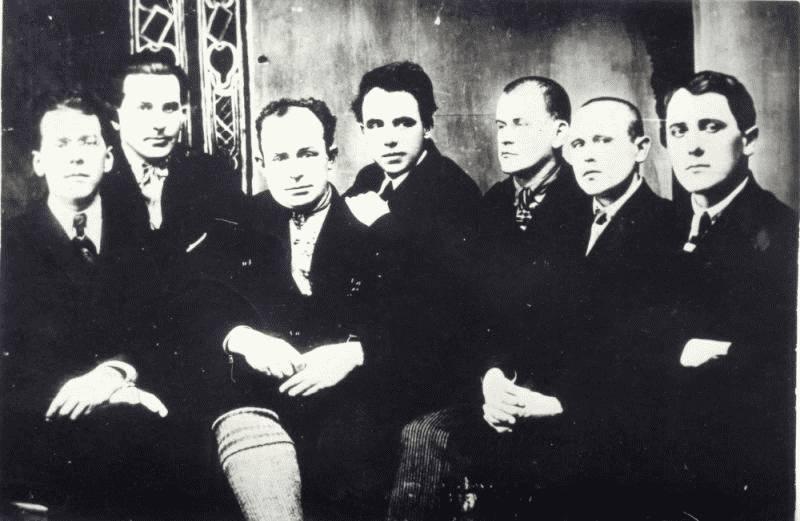
History and myth
In the 1920s, all the bright talents of Ukrainian culture gathered in Kharkiv, then the capital of Soviet Ukraine. Life was in full swing: theaters, literary associations, numerous magazines. Moscow, trying to tame the national outskirts of the empire, had briefly set a course for indigenization. Ukrainian culture experienced a Renaissance, and then it was almost wiped out by the Great Terror. But that will come later. In the 1920s the problem was that the nation’s best people had nowhere to live. Poets huddled in communal apartments, journalists often spent the night right at the newsroom.
The idea of solving the housing problem for Ukrainian writers in one fell swoop originated in the Plug [The Plow] association, an organization of rural writers in Ukraine. Soviet authorities liked this idea. A cooperative was created. money was allocated by the state, but residents had to repay their share within 15 years. At some point, however, the money ran out, delaying the construction of Slovo. According to one legend, help came from “the very top” – from Stalin.
In 1929, the “Ukrainian Week” festival was held in Moscow, and future residents of Slovo came to the Soviet capital. The chairman of the cooperative, Ostap Vishnya, allegedly handed over a note to the Secretary General complaining about the delays in the construction work. That same evening, as the story goes, a suitcase with money was delivered to the hotel where the Ukrainian writers were staying. Most likely this is fiction. In any case, the house was finished by the end of that year.
Barachny Lane (since 1930 – Red Writers Street) was at that time almost on the outskirts of the city: fresh air, a lot of greenery. The shape of the building resembles the letter “S” [C] (for “slovo”, which means “word” and was also the name of the letter itself in East Slavic alphabets). Residents would be called “Slovs.” 5 floors, 5 entrances, 66 apartments. Each had three or four rooms, high ceilings, huge windows. The largest, hundred-meter apartments went to the management of the cooperative – Ostap Vishnya and Sergey Pilipenko. There is a kindergarten in the basement and a solarium on the roof.
A small cement area and showers built into the walls made it possible to calmly bathe on a hot summer day and lie in the sun,” the son of playwright Mykola Kulish, Vladimir Kulish, later said. — The solarium was not very popular among adult residents. But we children loved it. When we told some friends at school about this miracle, few believed us.
Residents
Ukrainian writers gathered under one roof had very different backgrounds. And very different situations. The chairman of the cooperative, Ostap Vishnya (Pavlo Gubenko), was a humorist and an avid hunter. During the years of the war for Ukrainian independence (1917–1921) he had been a high-ranking officer in the medical service of the newly established Ukrainian People’s Republic. He was captured by the Bolsheviks in 1919 and held in Kharkiv until the war was over. Petro Panch and Andriy Golovko, Volodymir Sosyura, Borys Antonenko-Davydovich, Yuriy Yanovsky and many others fought against the Bolsheviks in the ranks of Symon Petlyura’s army. Despite the policy of Ukrainization and a short period of relative freedom, they remained under state surveillance.
At the same time, Mykola Khvylyovy, for example, fought on the side of the Reds (which did not stop him from later authoring the slogan “Away from Moscow!”) Mykhaylo Yalovy, Sergey Pilipenko, Mike Yogansen, Oles Dosvitniy all had Socialist views.
Some writers in Slovo were Party members : Kulik, Mykytenko, Kyrylenko and Le. They actively wrote denunciations against “enemies of the people.”
In the mid-1920s, many of the future residents of Slovo were members of the literary association VAPLITE (Vilna Academy of Proletarian Literature). The Academy was headed by Mykola Khvylyovy. It also included Mykhaylo Yalovy, Mykola Kulish, Arkadiy Lyubchenko, Oleg Dosvitny, Mike Yogansen, Pavlo Tychyna and others. Despite their different experiences, political positions, and belonging to sometimes quite distant literary movements, they were united by a desire to bring Ukrainian culture to the European level. Hence the slogan “Away from Moscow!”. At the same time no one tried to challenge the ideas of communism.
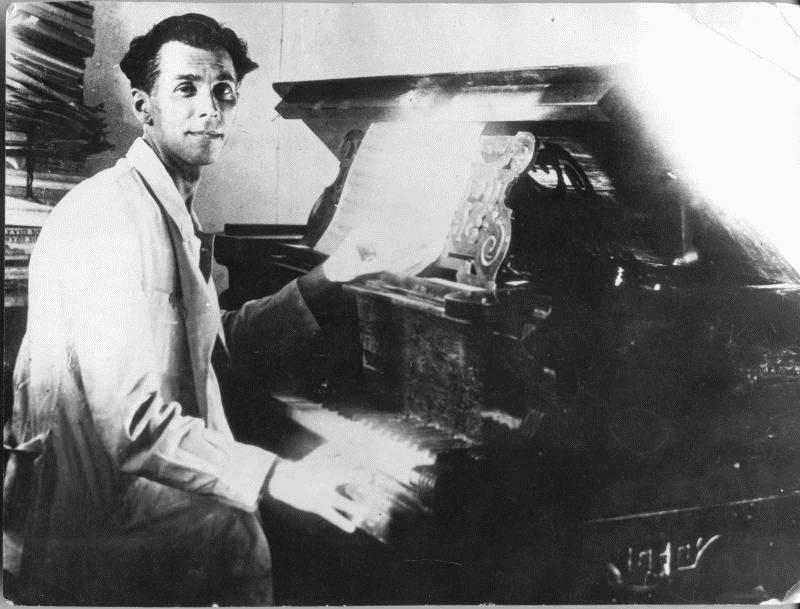
Terror
January 20, 1931 – one of the first arrests in Slovo: actress Galina Orlivna was picked up from apartment no. 29 (5 years of exile and a ban on returning to Ukraine).
In March of the same year, the tenant of apartment No. 25, a former member of the Central Rada (Ukrainian parliament during independence), and one of the founders of the Ukrainian Party of Socialists-Revolutionaries, publicist Pavlo Khrystyuk was arrested (he later died in a camp near Khabarovsk).
Then they came for the poet, prose writer and publicist Ivan Bagryany. He would spend several months in solitary confinement for “counter-revolutionary agitation”, and then be sent into exile in a "special settlement" in the Russian Far East.
Soon the terror machine began to work at full capacity: Ukrainization was curtailed, Renaissance was shot down.
On May 12, 1933, the poet, prose writer and playwright Mykhail Yalovoy was arrested on charges of “espionage activity,” “national deviationism,” and preparing an « assassination attempt » on Pavel Postyshev. At the trial, he would say that members of VAPLITE had been “preparing an uprising” in Kharkiv. He was executed in 1937.
The very next day guests gathered in apartment No. 9. Mykola Khvylyovy invited his friends – Kulish, Dosvitniy, Mike Yogansen. They had lunch and sang together. The owner of the apartment, said “Now I’ll show you how to write”, went to the next room, and shot himself. He left two notes: one to his wife, the other to his friends:
The arrest of YALOVOY is the execution of an entire Generation... For what? Because we were the most sincere communists? I don’t understand anything. First of all, I, Mykola Khvylyovy, am responsible for a generation, for Yalovoy. “So,” as Mikhail Semenko says... it’s clear. Today is a beautiful sunny day. You have no idea how much I love life. Today is the 13th. Remember how much I was in love with this number? It hurts terribly. Long live communism. Long live socialist construction. Long live the Communist Party.
The echo of this shot reverberated throughout the next decade, marking the death of the Ukrainian Renaissance and the death of Slovo. Doors would be closed. The NKVD would put its people on duty in the yard. Writers would no longer be able to write, unless someone tried to save themselves by writing denunciations against their own neighbors. Ivan Bagryany would call Slovo a “crematorium”, “a house of preliminary detention”. Some residents were taken away by black NKVD cars, new people moved into their apartments, but the fate of their predecessors would await them too. And so on – until almost no one from the “cooperative of writers” remained in Slovo.
We don’t know everything about the fate of Slovo residents. There is still no access to most of the archives related to the Great Terror. They are stored in the Russian Federation.
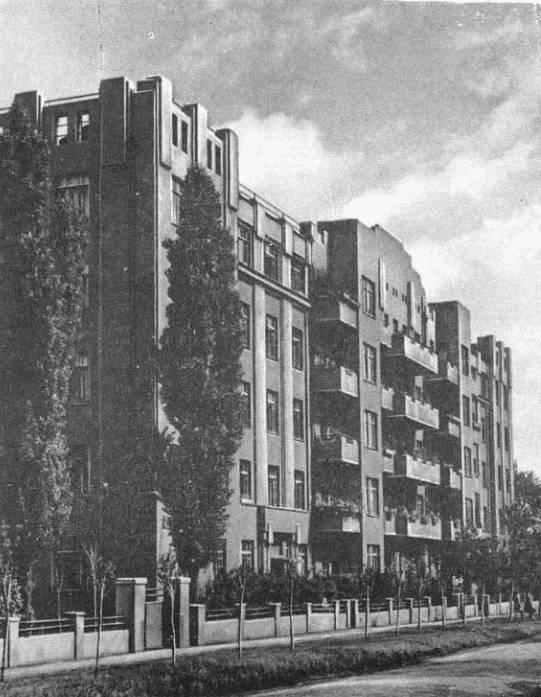
Slovo and war
Today the shape of the letter “S” [C] can only be seen from a bird’s eye view. Or from a drone. I would like to believe that those who strike at Kharkiv with Shahed bombs do not know about this building. Otherwise it might be specifically targeted. Slovo was almost destroyed at the beginning of the full-scale invasion. On March 7, 2022, a Russian shell fell near the house. Bricks fell off the facade of Slovo and windows flew out. Fortunately, no one died. The gray face of the house is still covered in pockmarks from shrapnel.
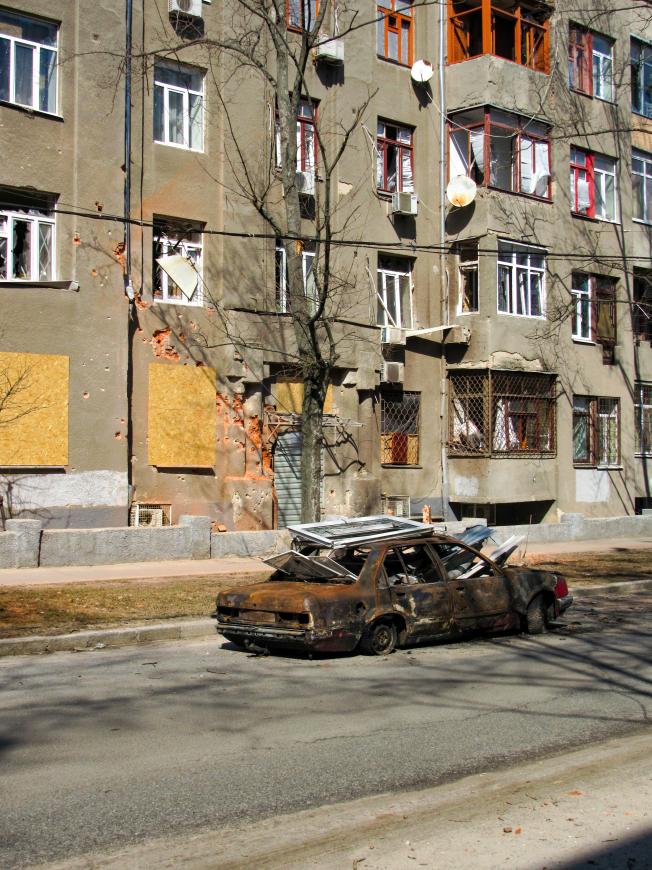
“A hundred years ago, Soviet authorities shot its inhabitants, and now its walls have suffered as well,” said in a statement the literary residency which gives European writers the opportunity to live and work in one of these historical apartments. “The Russian occupiers have again taken away peace from its current inhabitants.”
A detailed historical account of Slovo House is available in Ukrainian, English and Czech at the dedicated website proslovo.com
